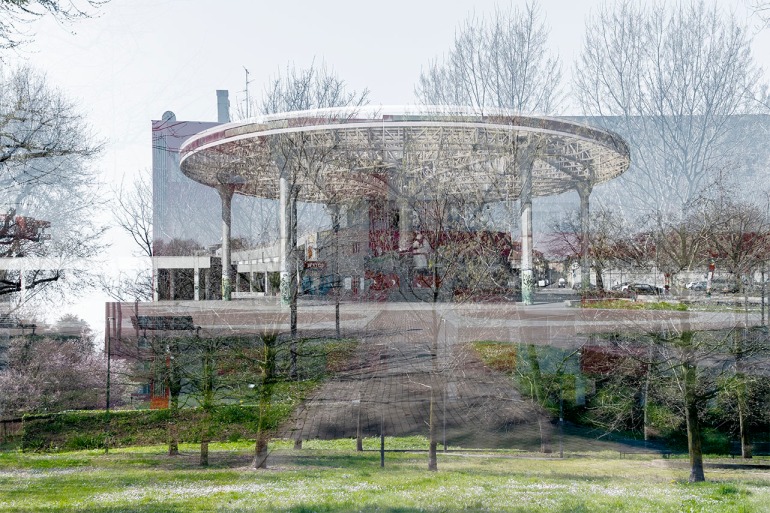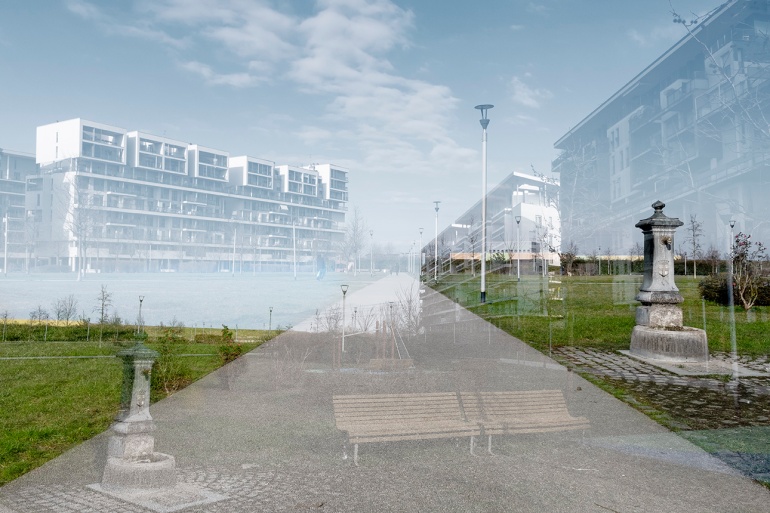
Not green enough – quartieri residenziali a Milano
Una selezione delle seguenti immagini e’ esposta al Milano Photo Festival nel 2021
“Non e’ ancora verde abbastanza”
Per i nuovi insediamenti residenziali la legge impone che 18 mq per abitante siano riservati per spazi pubblici. Questi includono però non solo il verde ma anche gli spazi riservati alle attività collettive di genere diverso e i parcheggi.
La superficie totale di verde pubblico a Milano e’ andata aumentando negli ultimi anni. Si calcola che per ogni abitante ci siano circa 37 mq di verde pubblico che si riducono pero’ a poco meno di 18 m2 effettivamente fruibili.
Gli spazi verdi urbani hanno una funzione molteplice di natura ambientale, sociale e culturale. Secondo recenti studi entro il 2030 il 70% della popolazione mondiale vivra’ in grandi citta’. Questo dato insieme all’emergenza ambientale, la necessita’ di combattere l’inquinamento e persino le nuove problematiche legate alla pandemia, attribuiscono al verde pubblico un ruolo un fondamentale nella sostenibilità urbana.
Queste immagini sono un viaggio tra zone meno centrali della città di Milano, quartieri residenziali, aree urbane note e meno note. Alcune di esse sono di nuova edificazione. Altre, a partire dagli ultimi anni del secolo scorso, sono state oggetto di profonde ristrutturazioni urbanistiche. In tutte e’ stata data molta importanza alla creazione di spazi pubblici e di verde urbano. In questi luoghi ho visto le persone immerse nello spazio urbano che abitano, quasi a fondersi con l’ambiente che le circonda. Nei colori spesso sbiaditi delle citta’ ho visto il verde e ho pensato che non sia ancora abbastanza per far fronte alle sfide del nostro tempo.

Tecnica: doppie esposizioni in ripresa, a mano libera, nello stesso luogo e a pochi istanti l’una dall’altra.



















“It is not green enough yet”
For new residential settlements, the law requires that 18 square meters per inhabitant be reserved for public spaces. However, these include not only greenery but also spaces reserved for collective activities of different kinds and parking lots.
The total area of public green in Milan has been increasing in recent years. It is estimated that for each inhabitant there are about 37 square meters of public green which are reduced to just less then 18 square meters actually usable.
Urban green spaces have a multiple function of an environmental, social and cultural nature. According to recent studies by 2030, 70% of the world population will live in large cities. This data together with the environmental emergency, the need to fight pollution and even the new problems related to the pandemic, give to public green a fundamental role in urban sustainability.
These images are a journey through less central areas of the city of Milan, residential districts, known and lesser known urban areas. Some of them are newly built. Others, starting from the last years of the last century, have undergone a deep urban restructuring. In all of them, great importance has been given to the creation of public spaces and urban greenery. In these places I saw people merged in the urban space they live, almost melting with the environment that surrounds them. In the often faded colors of the cities I saw green and I thought that it is still not enough to face the challenges of our time.
Technique: double exposures in shooting, free hand, in the same place, few moments from each other.
